Lockdown, the war in Ukraine, and huge rises in the cost of fuel have had a massive impact on tulip farming in Holland. How are they recovering and what are their hopes for the future?
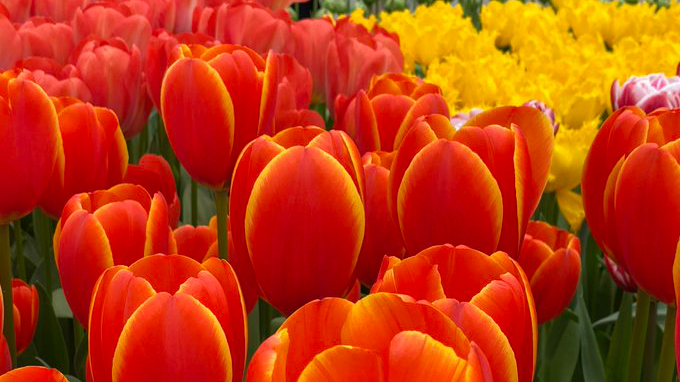
It’s a rainy gusty morning but that doesn’t seem to have damped the enthusiasm of the stream of tourists who file into the gates of Holland’s Keukenhof Park. They have come to see one of the country’s biggest attractions: field upon field of brightly coloured tulips.
Cameras are trained to capture the sea of neatly planted pinks, mauves and rich reds that seem to stretch for miles and represent one of the country’s most important exports.
The period from late March to mid-May every year is the tulip blooming period and also the peak tourist season in the Netherlands. However, in the past two years, due to the impact of the Covid-19, there were almost no tourists in Keukenhof Park. This year, with the end of the pandemic and the opening of border restrictions in most regions and countries, Keukenhof Park has become lively and prosperous again.
“The lockdown has affected the tulip market and tourism in the Netherlands, mainly affected the tourist market,” said Nienke. “Tulips and bulbs still grow during a lockdown.” Therefore, many farmers and growers had to watch their cultivated flowers lose their value, and even had to destroy them.
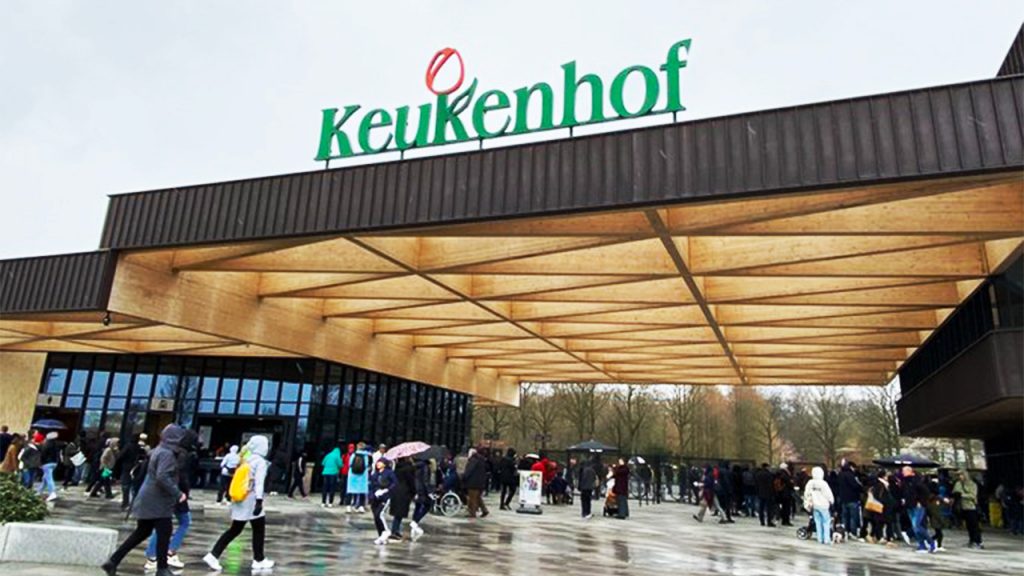
International tourists heading to the Netherlands decreased by 97% in April 2020 compared to the same month in 2019 due to the global COVID-19 pandemic, according to Statista Research Department, Although international arrivals in April 2021 and 2022 have increased relative to 2020, they are still far below pre-pandemic levels.
This is because while some countries and regions have begun to gradually ease travel restrictions, there are still travel restrictions and entry requirements such as nucleic acid testing and quarantine, which have had a negative impact on the tourism industry in the Netherlands.
“Keukenhof was closed for two years,” Tony Whelan, an employee of a store within Keukenhof Park said, “The coronavirus did affect it.”
In order to prevent the waste of large areas of flowers in the park due to the lack of visitors, Keukenhof Park opened an online virtual viewing channel in 2021. This allows tourists from around the world to remotely appreciate the floral landscapes in the park through the Internet.
“This year over 1,5 million compared to only Dutch tourists during the epidemic,” said Nienke, a business owner and photographer.
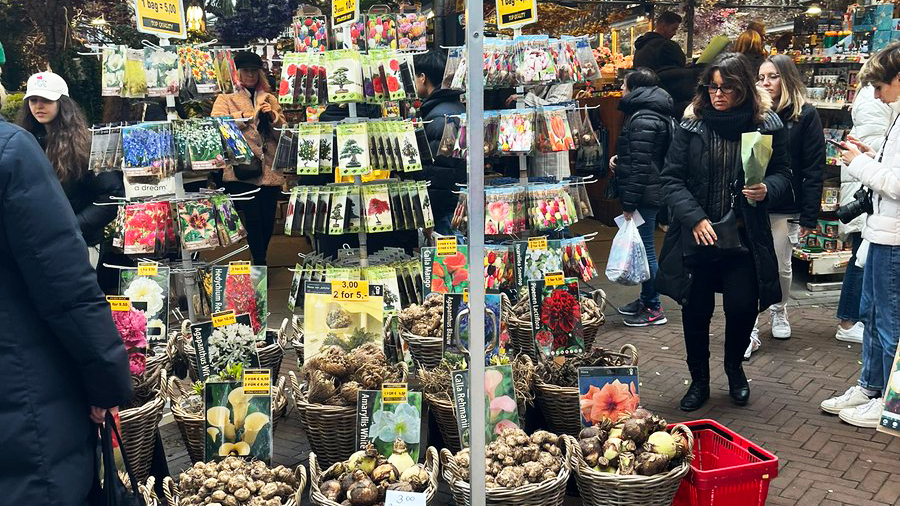
During the lockdown, the Dutch tulip market was hit hard. Many tulip growers were forced to destroy their flowers because no one came to visit flower exhibitions or purchase flowers due to the lockdown measures. Moreover, the pandemic also led to the closure of many businesses in the tourism industry, resulting in a significant blow to the Dutch tourism industry. Many people canceled their travel plans.
“It was sad, we had to destroy a lot of bulbs that demanded a lot of work and care,” said Caroline Digman. She and her husband Ronald own a tulip, daffodil, and crocus farm in northern Holland. The pandemic has affected the sales of tulips, causing losses for their farm.
However, COVID-19 is not the only challenge facing the Dutch tulip market. The Ukraine conflict has led to an increase in fuel prices such as oil, coal, and natural gas, while inflation has increased the cost of living, putting pressure on Dutch farms.
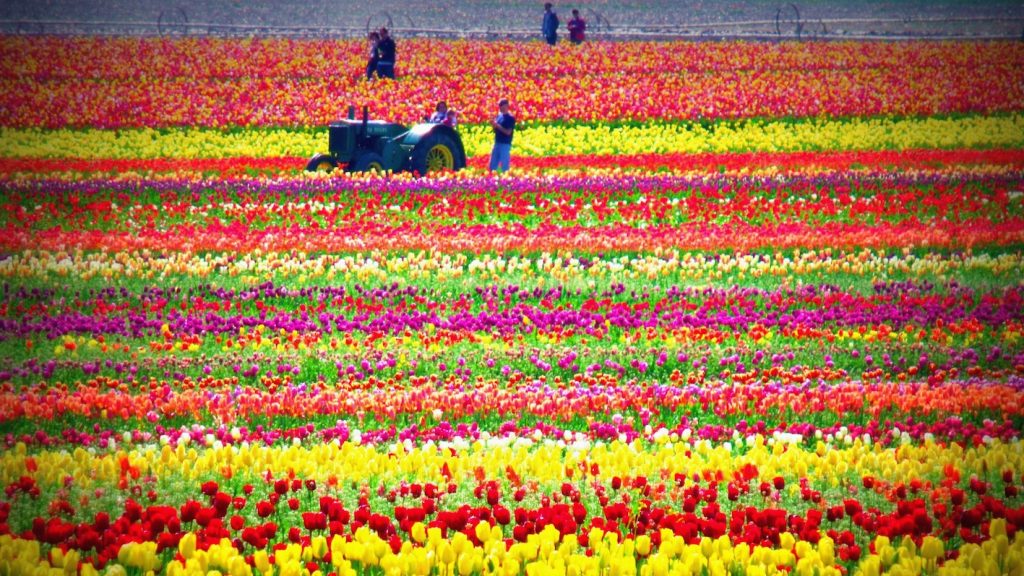
The Netherlands is one of the world’s leading producers of tulips, and exports account for a significant portion of its total sales. However, the conflict has led to a rise in energy prices in the Eurozone. This has led to an increase in the cost of transporting tulips to foreign countries, which has affected the competitiveness of Dutch tulips in the international market. This may have a certain impact on the profitability of the industry.
“It certainly has an impact because the price of transport to the United States and to Canada has become more expensive because of that reason. So it’s more with the transport because normally we transport our exports with containers on Container boats,” said Tony.
“So the price of the place the fuel for the container boats becomes more expensive. And then that also affects the price of not the price of the flower bulbs but it affects the price of the transport to the different countries.”
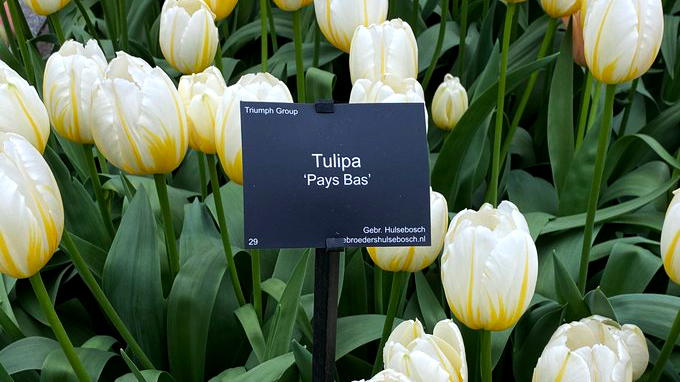
As the national flower of the Netherlands, the tulip is a very important cultural and tourism resource, bringing in a lot of commercial and tourism revenue for the country. The history of tulip cultivation in the Netherlands can be traced back to the 16th century when tulips were a luxury item that only the wealthy nobility could afford.
Later on, tulips became even more popular and became an iconic product of the Netherlands, greatly loved by the Dutch people and tourists. Every year, the Netherlands holds a Tulip Festival. During the festival, the whole country is decorated with magnificent tulip fields, showcasing a wide variety of beautiful tulips, attracting a large number of visitors and flower enthusiasts from around the world.
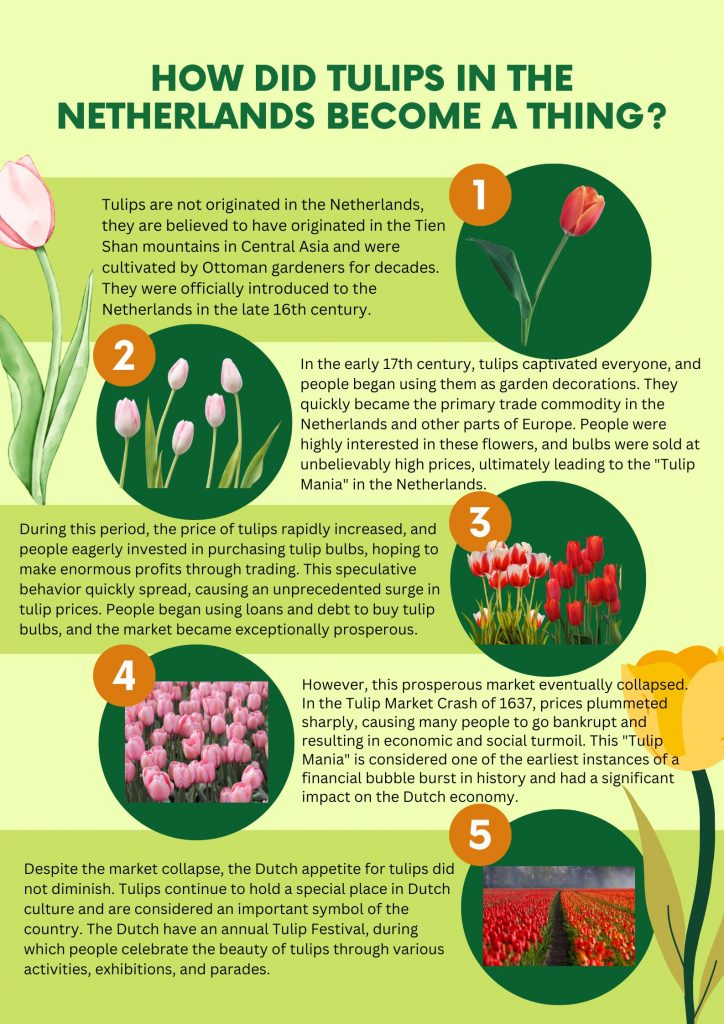
As the largest tulip park in the Netherlands, Keukenhof Gardens has seen a constant stream of visitors this year. Tony is often surrounded by enthusiastic tourists who approach him to purchase tulip bulbs. Many international visitors prefer to receive information about different tulip varieties and learn about cultivation when buying tulips, and Tony is regarded by his colleagues as the most knowledgeable person about tulips in the shop.
“I work in a factory where we pack the flower bulbs. At this time of year, I come into this shop and sell flower bulbs to people from all over the world, normally from Europe, Canada, and the USA,” said Tony. Because of this, he can provide comprehensive guidance to visitors regarding tulip varieties, cultivation, and care, enabling them to make more informed purchases of tulip bulbs and gain a deeper understanding of the stories behind these beautiful flowers.
There are various types of tulips in the garden, with different colors including red, yellow, white, pink, purple, and different petal types such as single-petaled, double-petaled, and fringed. After asking Tony for advice, many visitors picked up a catalog and carefully selected their favorite tulip varieties.
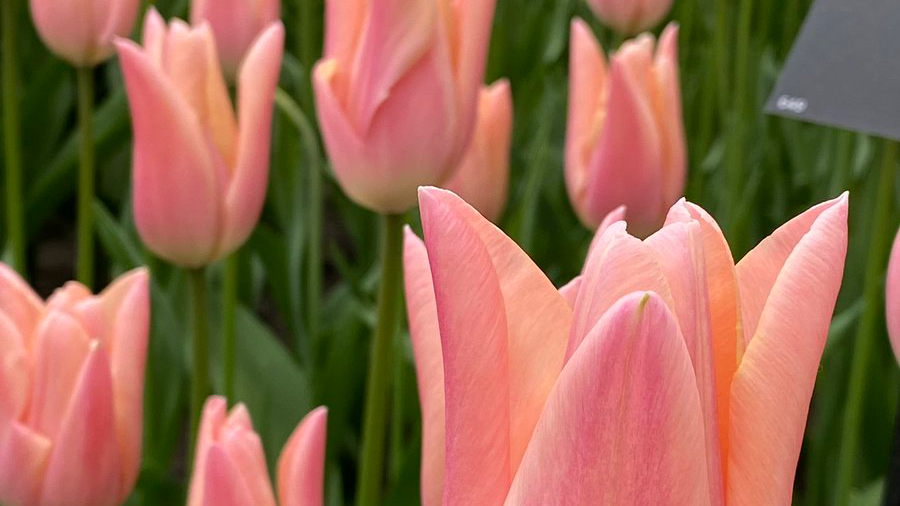
Tony held a catalog showing the appearance of several special tulips after they had bloomed. He said, “In the catalog, we have many different types of tulips. Some of the names, for instance, we have a tulip, Uncle Tom, we have a tulip wars favorites. Probably one of our most popular ones would be tulip ice cream. It looks like ice cream.”
Not only are visitors to Keukenhof Park constantly streaming in, but after going through the difficulties caused by the COVID-19 pandemic and subsequent lockdowns, the entire tourism industry in the Netherlands is gradually recovering. More and more international tourists are coming to the Netherlands to enjoy its beautiful scenery, rich culture, and relaxed countryside lifestyle.

“Everyone in my region feels optimistic this year because there has been an increased demand for flowers and bulbs in the market,” said Dignum. “It’s a significant difference compared to last year when everyone felt uncertain and unsure of what would happen.”
Although the rising energy prices and cost of living posing ongoing challenges for the Netherlands, the gradual recovery of the tourism industry has brought hope. This indicates a gradual revival of the country’s tourism economy. This spring, a large number of international tourists visiting to admire the tulips have brought a lot of vitality to the Netherlands.
“Compared to during the Covid-19, I think this year will be better than last year, it will definitely get better in the future,” said Tony.
